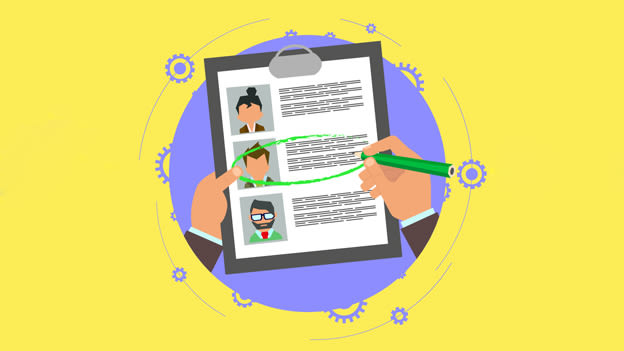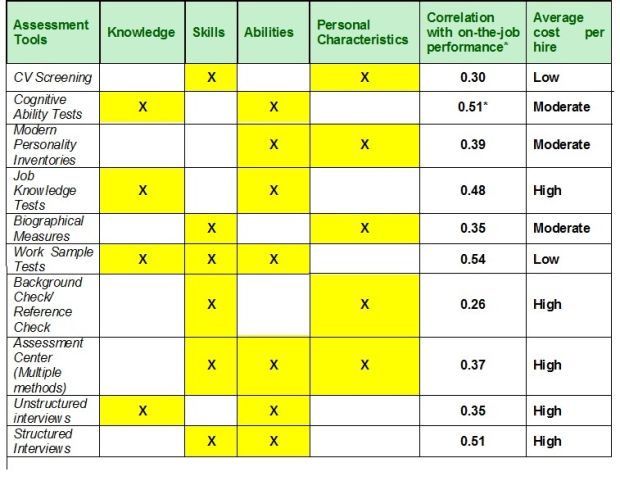Hiring Framework: Choosing Effective Selection Processes

The increasing cost of a bad hire and lack of talent supply are the top leadership challenges today; and ensuring that talent assessment and selection is attuned to critical role requirements has emerged as a key imperative. With insights gained from studies conducted by Aon Hewitt in the Asian market, we establish that the No.1 talent acquisition challenge faced by organizations in India is the speed and quality of the hiring process.
Based on our research, we find that hiring decisions need to be made on data and not on subjective interpretation of data. This complicates the hiring process as there needs to be an increased focus on gathering sufficient information about the candidate as well as distinguishing between relevant and irrelevant information for the specific role.
Organizational researchers, Seibert, Williams and Raymark (2010) ascertained that evaluation outcomes of a resume vary based on the judgment of the recruiter, and the process used to evaluate an applicant across role requirements is inconsistent. Discrepancy at an early stage in the recruitment process increases costs and the probability of a wrong hiring decision.
Today, the hiring framework in organizations is focused on minimizing the cost per hire and reducing time taken to fill a vacancy. Hiring framework in organizations has therefore been negatively impacted by the critical metrics of cost per hire, time taken to fill the vacancy while overlooking the key purpose of identifying the right talent. Insights gained from our ongoing research establish that it is imperative for a hiring framework to answer two critical questions:
- Is the hiring framework integrating input/data from various sources and steps of the hiring process progressively at every stage?
- What skills are being measured by each tool across the hiring stages?
For the hiring process to be successful and effective, it is important that organizations are able to answer these questions. Highlighted below constitutes an effective hiring framework and the tools used to gather information about candidate’s knowledge, abilities, skills and personal characteristics (KSAPCs).
Talent imperative
Tools deployed to screen and select candidates vary depending on the skills required for that particular role. Take for example, the knowledge required by a Java course instructor for teaching vis-à-vis the skill set, experience and technical know-how required by a Java Coder for a coding job.
The framework for effective hiring: Assessing talent while optimizing key outcomes
It is recommended to map relevant KSAPCs to the hiring and selection framework in order to optimize the outcomes at each stage of the hiring cycle. An effective hiring framework is hinged on three key principles:
- Identify desired outcome at each stage in the assessment framework: Deploy an integrated assessment framework with progressive complexity at subsequent hiring stages. Define selection and rejection criteria based on critical skills for every stage.
- Map assessment tools basis their ability to measure relevant skills at each stage: Identify skills that need to be assessed at each hiring stage and deploy combination of tools that best measure the same.
- Measure all KSAPCs at least twice by the end of the hiring cycle: Deploying the standard assessment center context and balancing for performance spikes, measuring each skill at least twice by the end of the hiring funnel reduces tool bias and erroneous hiring decisions.
Table 1.1: Competency based hiring framework
The table below shows typical selection and assessment tools mapped to relevant KSAPCs basis their measurement ability (correlation of assessment tool score with on-the-job performance) and tentative cost impact. One or more of these tools can be used in conjunction to articulate a competency hiring framework.

* Correlation with on-the-job performance is based on results of the meta-analysis conducted by Schmidt and Hunter (1998)
Deploying assessment tools with increasing fidelity at each step in the selection process enables differentiation of key business outcomes. Additionally, it allows the hiring process to be scalable. While organizations are popularly opting for uniform hiring frameworks, it is imperative that organizations deploy the differentiated hiring process mapped accurately to specific roles.













